-
Free Delivery in DE, AT & CH
-
Made in Germany
-
Individual Customisation Available
Author: DREIECK DESIGN Editorial Team
Last updated: May 23, 2025
The home office has become increasingly popular, and not just since the COVID-19 pandemic. However, not everyone has the luxury of a dedicated office space at home. As a common workaround, many people place their desks in the bedroom. In this article, we'll show you how to integrate a study or workspace into your bedroom effectively, without sacrificing its cosy atmosphere. Turn this compromise into a stylish and functional solution!
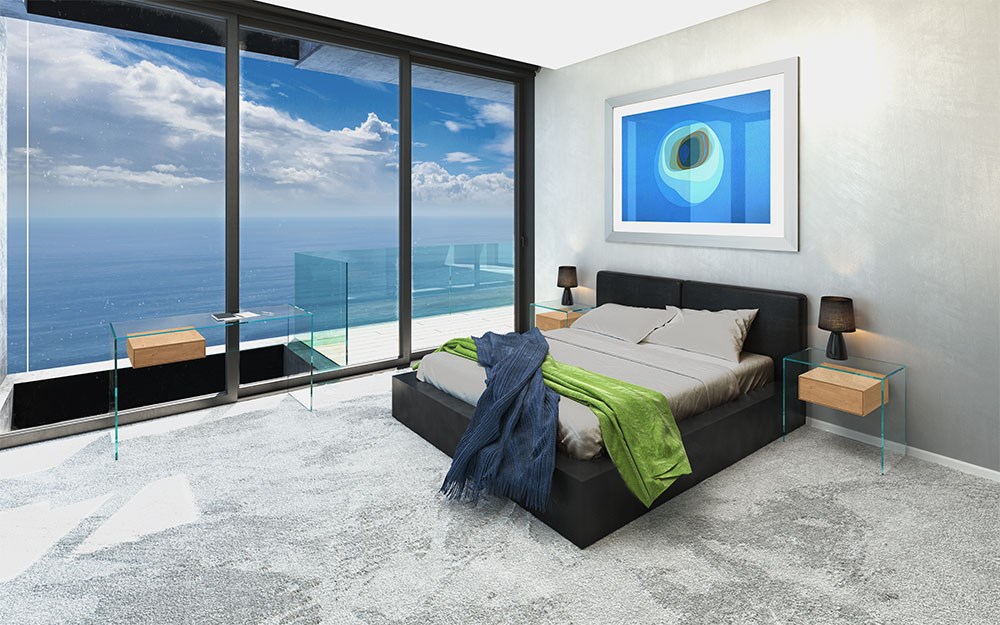
(Photo shows glass desk with drawer FLY and nightstand PURE FLY by DREIECK DESIGN)
The first and most crucial question is deciding on the optimal location for the desk. Here are a few preliminary tips:
Of course, the final decision will also depend on the available space. Take a thorough look around the room and identify any unused niches, bay windows, or corners. A small or narrow desk, such as an elegant glass desk that appears less bulky, can often be ideally accommodated in these spots.

(Photo shows glass desk with drawer JANUS TS by DREIECK DESIGN)
Our Tip: It can also be worthwhile to reconsider existing furniture. Replacing a large, bulky cupboard with a model half its size can free up valuable space for your desk. You can compensate for any lost storage with clever solutions, such as storage boxes under the bed.
To prevent work thoughts from intruding on your sleep or sleepiness from affecting your concentration at the desk, a clear visual separation of the two areas is highly recommended. The following five ideas offer ways to discreetly hide or demarcate the workspace within the bedroom.
A tried-and-tested method for dividing a room while also creating additional storage space is to use a shelf strategically placed in the room. If you want to promote a calm, orderly impression, choose a closed shelving unit with doors or use storage boxes within open compartments. If, on the other hand, a tall shelf makes the room feel too crowded, opt for an open-backed shelf – like a sleek glass shelving unit that allows light to pass through – or a half-height piece of furniture.
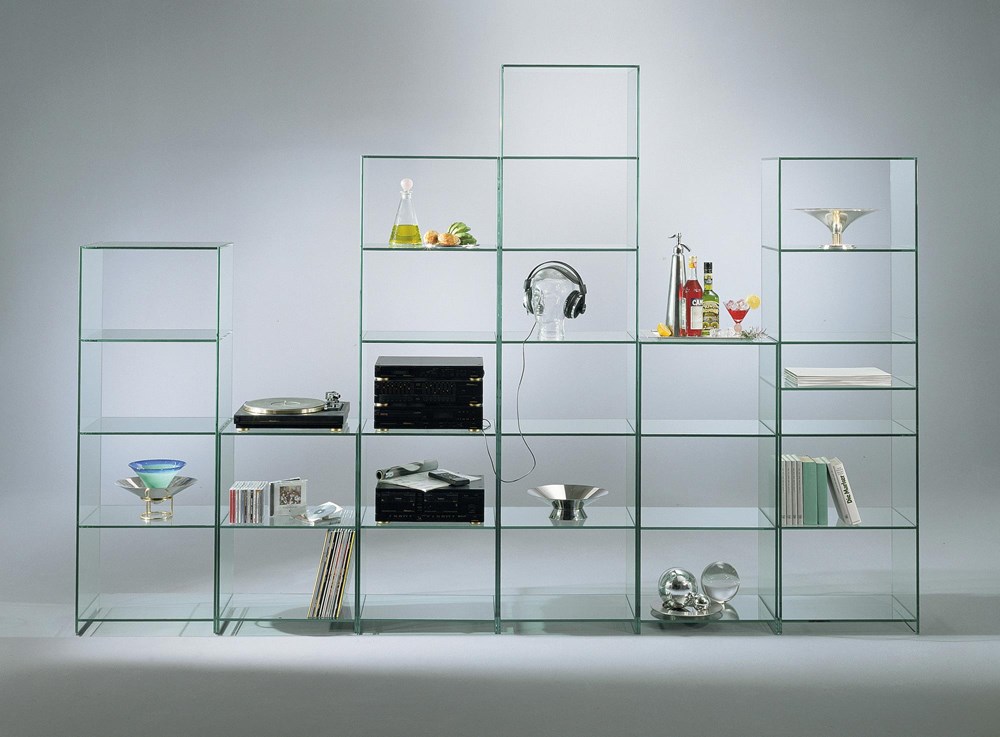
(Photo shows glass shelf TOURELLE by DREIECK DESIGN)
A folding screen is a classic room divider, designed specifically for this purpose. It doesn't take up much space and offers the advantage of being flexible – you can easily move it. This allows you to visually separate the work area at night to promote inner peace. During the day, simply move it aside to create additional space. As an elegant alternative that can also make the room feel larger, consider using standing mirrors to structure the room.
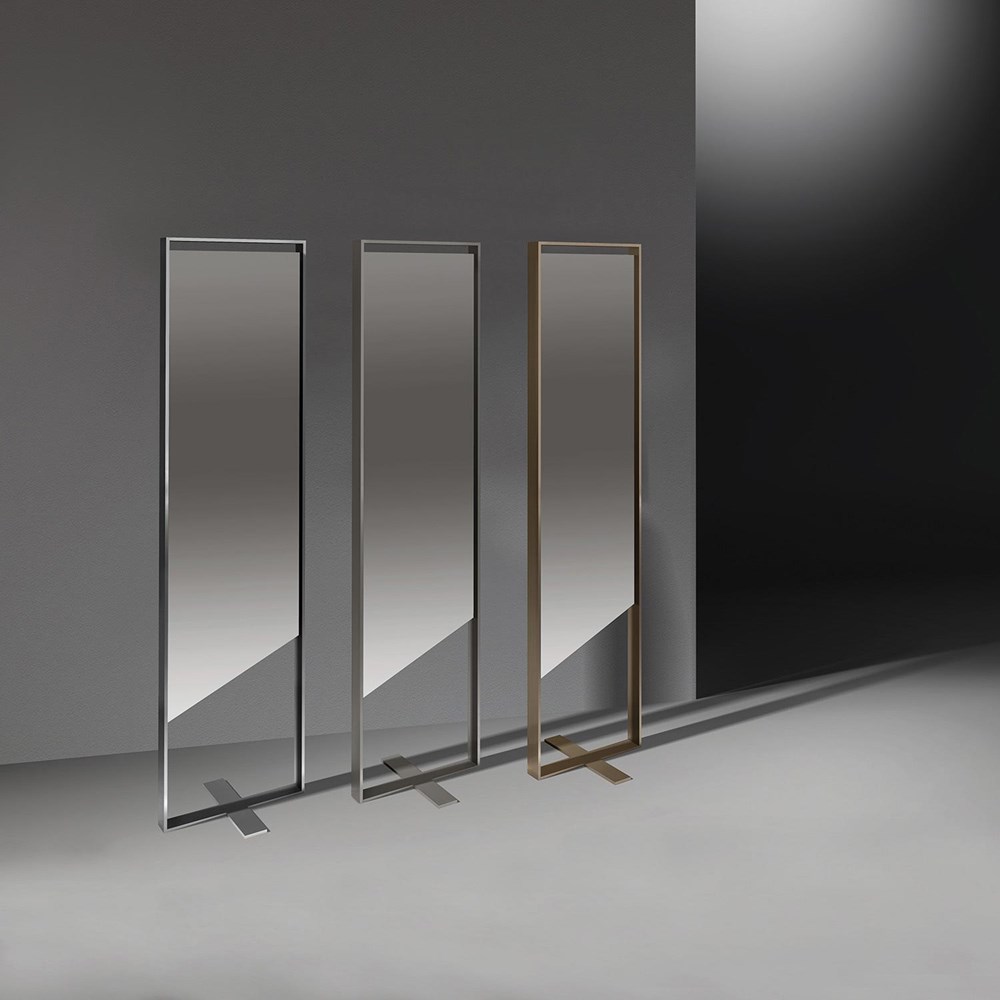
(Photo shows standing mirror GIOLINA by DREIECK DESIGN)
Our insider tip for integrating a workspace into the bedroom: curtains. They fit perfectly into the calm atmosphere of a bedroom and create a soft, flowing look. When drawn, they can create a cosy, canopy-bed-like feeling around the sleeping area while concealing the workspace. During the day, they can be neatly pushed aside. It's best to choose translucent, light-coloured fabrics that make the room appear bright and airy.
If you don't shy away from a bit more effort and desire a more permanent separation, a subsequently installed lightweight stud wall could be a good option. However, this solution is particularly suitable for originally larger bedrooms, as otherwise both resulting zones might feel too cramped. You don't necessarily have to completely divide the room with the wall; a half-height wall or one that spans about a third of the room's width can create a perfect work niche.
It's even better, of course, to use existing architectural features. Let your gaze wander through the room and look for unused corners, alcoves, or projections. Often, it doesn't take much space to discreetly accommodate a narrow desk. It might even be worthwhile to have a suitable piece of furniture, like a custom-made desk, crafted by a carpenter or specialist manufacturer to perfectly fit the available space.
Or Embrace the Opposite: Emphasize Your Workspace!
Sometimes, breaking supposed basic rules is precisely how attractive design is created. Instead of hiding your workspace, why not draw attention to it? With an eye-catching desk lamp, an exclusive glass desk that makes a statement, or a colourful ergonomic office chair, a previously mundane work niche can become a captivating design feature.
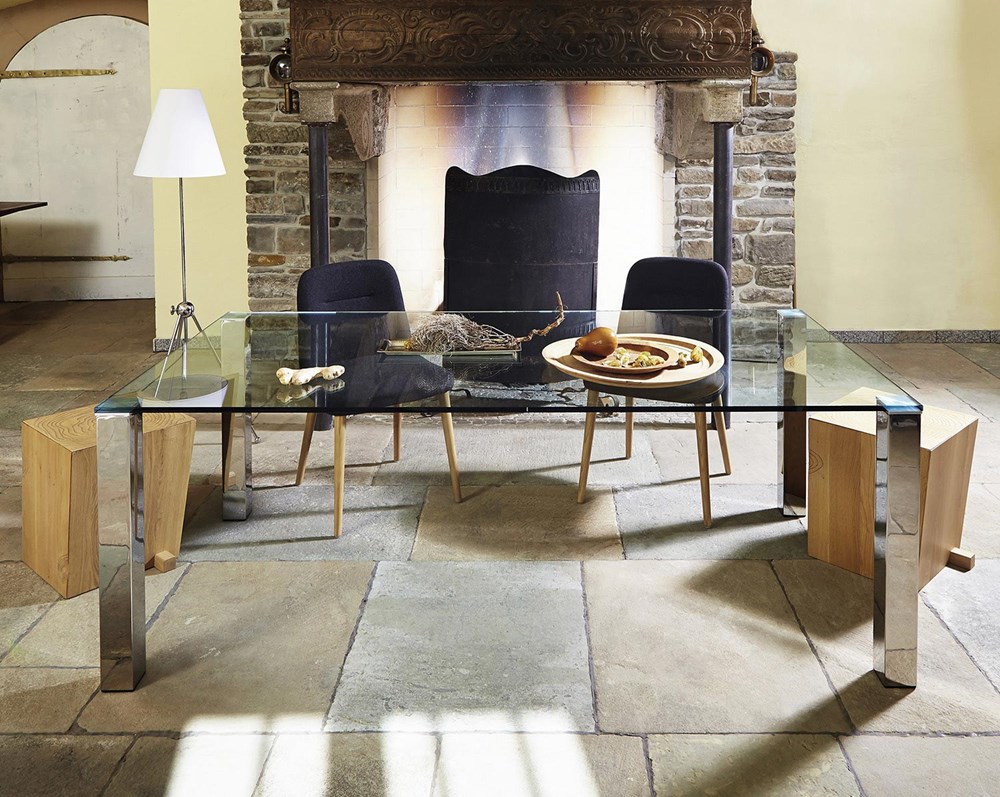
(Photo shows glass table QUADRO MAGNUM by DREIECK DESIGN)
The typical furnishing style of an office usually differs significantly from bedroom decor. At work, we prefer order and clarity; in the bedroom, it should be comfortable and homely. If you integrate your study into the bedroom, you need to find a good compromise between these two needs. It's best to opt for functional furniture that also radiates something playful and soft – for example:
One or two attractive green plants are almost a must-have. They not only improve the indoor climate but also lend a pleasant, fresh touch to both your work and sleeping areas.
Combining a bedroom and study in one room can be quite challenging, as space is often scarce. Fortunately, there are numerous clever ideas for making the most of small areas – think "Tiny House" ingenuity. Get creative and try out some of the following room solutions:
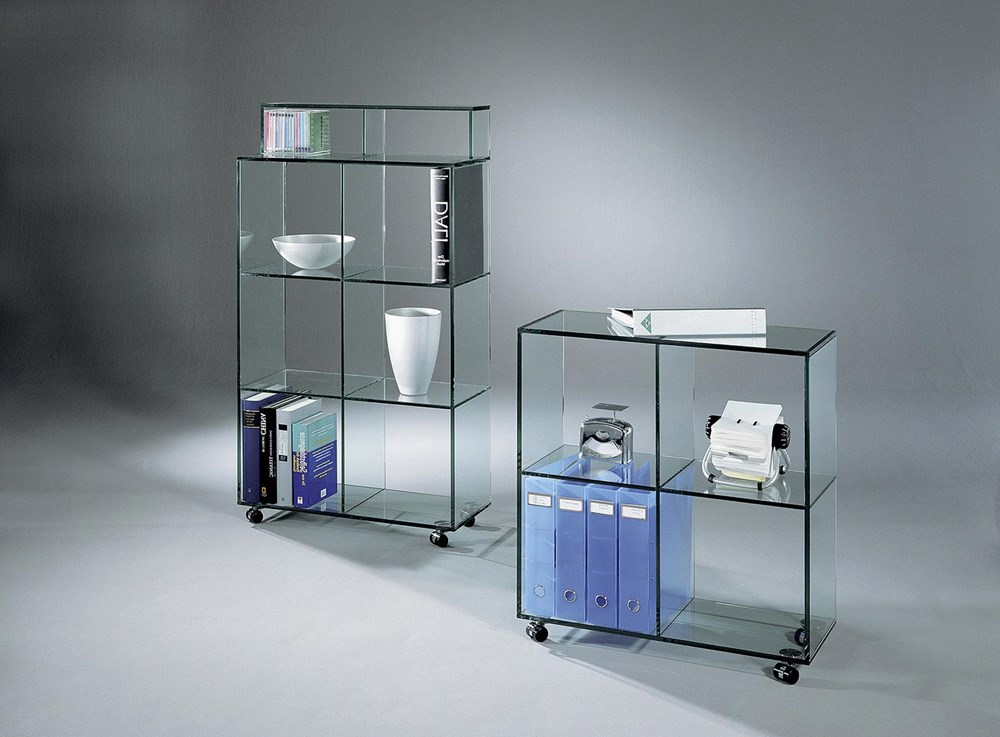
(Photo shows glass shelf on wheels BOOKLINE by DREIECK DESIGN)
Do you value harmonious furnishings that allow energy (Chi) to flow freely? If so, you might consider aligning your space with the principles of the Asian art of Feng Shui.
First things first: Combining a bedroom and study is, from a Feng Shui perspective, not ideal. This is because the bedroom is considered a "Yin" area, where rest, relaxation, and passivity should be paramount. The study, conversely, is a "Yang" space, dominated by activity and focus. However, don't worry: if integrating the study into the bedroom is your only option, you can balance these opposing energies with a few targeted measures:
Clutter disrupts energy flow. The teachings of Feng Shui recommend an orderly, calm environment for both working and resting. Ensure you have enough storage options so that all utensils and materials have their designated place. Importantly, these should ideally be closed containers, cupboards, or shelves like the LISBOA solid wood console, to maintain a serene visual.
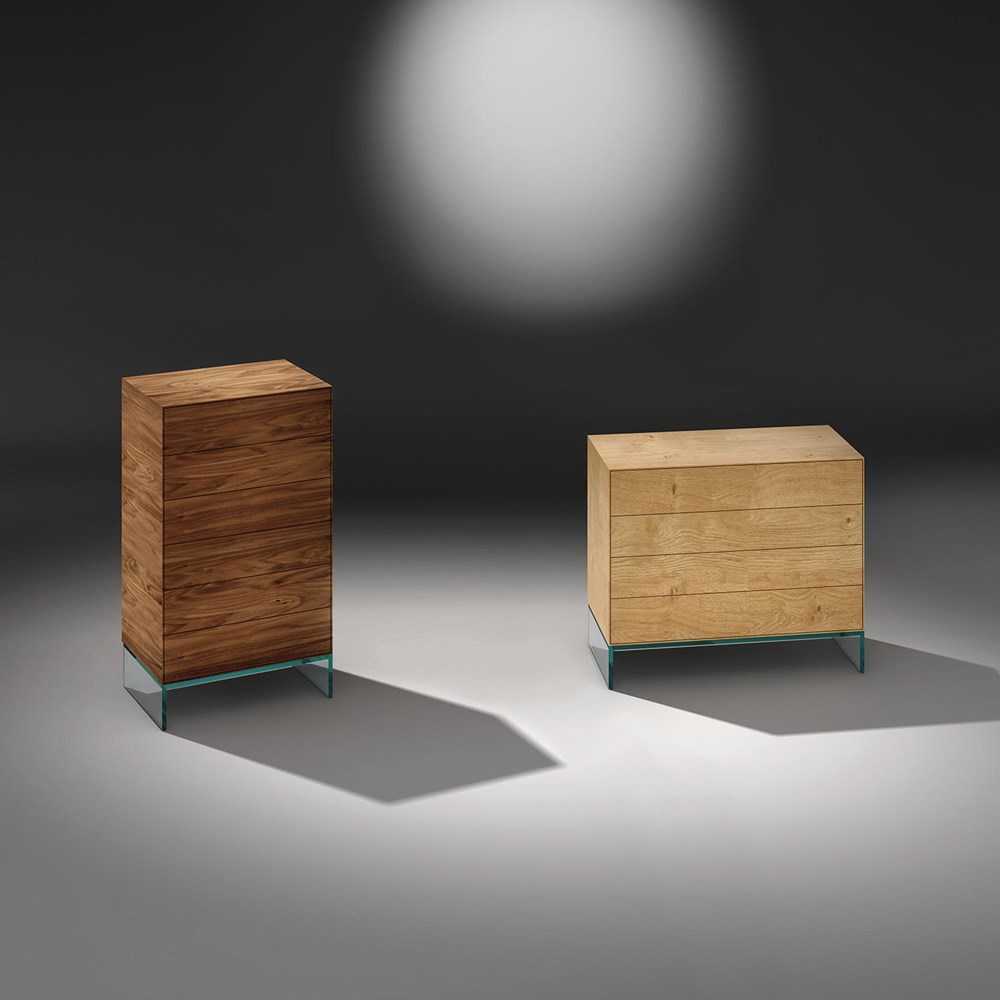
(Photo shows solid wood console LISBOA in walnut and oak by DREIECK DESIGN)
For a peaceful night's sleep, electronics should be banished from the bedroom as much as possible. If you integrate your study into the bedroom, a laptop and PC are probably unavoidable. Therefore, make sure to shut everything down completely after work and also switch off multiple socket extensions to reduce electromagnetic interference.
A desk position where you have a solid wall behind you is ideal. This setup makes us instinctively feel protected and secure, allowing us to devote our full concentration to work tasks. Avoid sitting with your back to the door or directly between a door and a window.
Try to divide the room into two clear zones: one for "Yin" (rest, relaxation) and one for "Yang" (activity, focus). You can find ideas on how such a visual differentiation can be achieved (e.g., with room dividers) in the first part of this article.
Linen, wicker, and wood are particularly suitable for creating a cosy atmosphere in the bedroom. Therefore, it's best to use these materials in the work area as well, for instance, a desk with wooden elements like the FLY glass desk featuring a solid wood drawer. Metal, on the other hand, should generally be used sparingly in Feng Shui bedroom designs as it's considered more "active".

(Photo shows glass desk with wooden drawer FLY by DREIECK DESIGN)
Anyone who has worked from home for an extended period knows the problem: at some point, work and free time can seem to blur. This is all the more true if your study is integrated into your bedroom. In this situation, it's particularly important to maintain a healthy work-life balance!
It's best to consciously schedule fixed working hours. Just as with an external office, sit down at your desk at a specific time and work for a predetermined period. This makes it easier to switch to "after-work mode."
It is also advisable to change clothes. Sitting down at your desk in your pyjamas may seem convenient when the bed is only two metres away, but this is not conducive to focused work.
And last but not least: don't spend your entire day in the bedroom-study. After your workday ends, you should find at least a few hours to spend in the living room, with friends, or outdoors to gain perspective and recharge.
A separate room for each area of life – that would, of course, be ideal. In reality, however, one sometimes has to improvise. With a bit of creativity and thoughtful planning, a study can be successfully integrated into the bedroom, creating a small but well-appointed home office within your sleeping quarters.